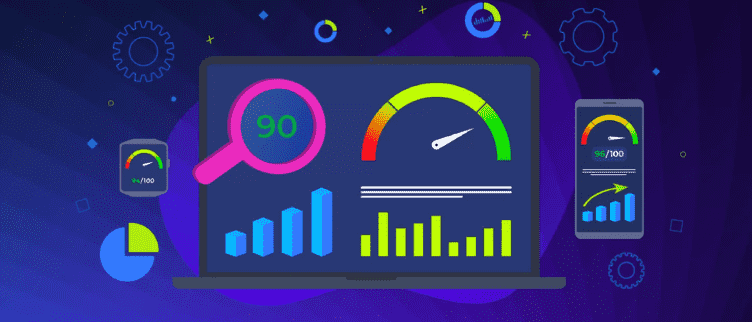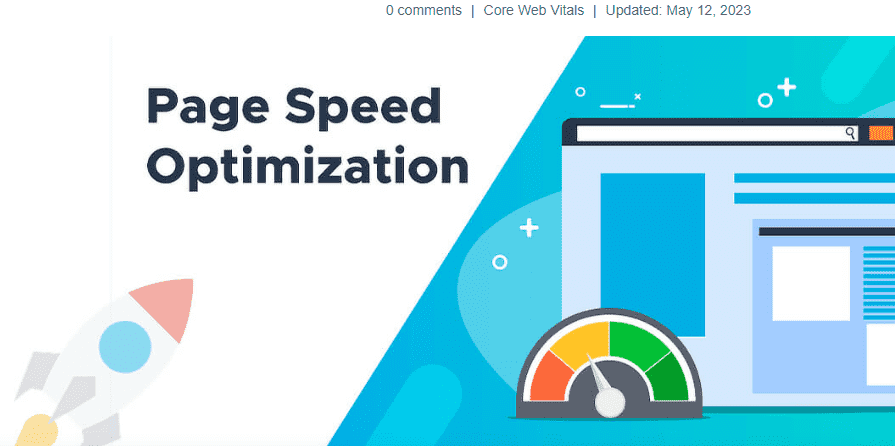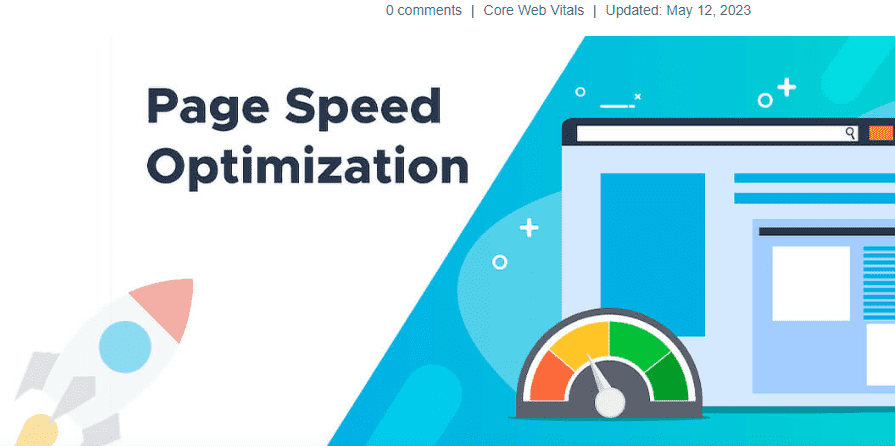page speed optimization course: introduction
Page velocity optimization complements internet site average performance by lowering load times, increasing sales and customer revenue, and growing search engine marketing ratings. Key strategies embody optimizing server answer cases by Content Delivery Networks (CDNs), minifying and compressing HTML, CSS, and JavaScript, and optimizing images. Advanced techniques like lazy loading, prefetching, and leveraging HTTP/2 and HTTP/3 are also essential. Regular monitoring and mobile optimization ensure ongoing effectiveness, making websites faster and more efficient.
Introduction to Page Speed Optimization
What is Page Speed?
Definition:
The time an internet website page takes to load and become interactive.
Components:
Initial server response, content load time, interactivity time.
Importance:
Direct impact on user have fun, bounce, and conversion rates.
Why is Page Speed Important?
User Experience:
Faster sites provide a better experience.
SEO:
Search engines prioritize fast-loading websites.
Mobile Users:
Critical for mobile users with Different network speeds.
How to Measure Page Speed?
Tools:
Google PageSpeed Insights, GTmetrix, WebPageTest, Lighthouse.
Key Metrics:
First Contentful Paint (FCP)
Time to Interactive (TTI)
Largest Contentful Paint (LCP)
Cumulative Layout Shift (CLS)
Speed Index (SI)
Factors Affecting Page Speed
Server-Side Factors
Server Response Time:
Factors:
Server performance, database queries, hosting quality.
Solutions:
Optimize servers, use faster systems, and improve servers.
Hosting Environment:
Shared vs. Dedicated Hosting:
Impact on performance.
Cloud Hosting:
Benefits and considerations.
Content Delivery Network (CDN):
How CDNs Work:
Distributing content material toward users.
Setting Up a CDN:
Selecting and configuring a CDN company.
Client-Side Factors
HTML, CSS, and JavaScript Optimization:
Minification:
Reducing document size by casting off whitespace and feedback.
Compression:
Use Gzip or Brotli to compress files.
Image Optimization:
Formats:
Choosing the correct format (JPEG, PNG, WebP).
Compression:
Reducing image file size without losing quality.
Responsive Images:
Using srcset for different screen sizes.
Third-Party Scripts:
Impact:
How external scripts can slow down your site.
Management:

Loading scripts asynchronously or deferring them.
Server-Side Optimization
Improving Server Response Time
Hosting Provider:
You are choosing a reliable host with good performance metrics.
Benefits of managed hosting services.
Server-Side Caching:
Types:
Full-page caching, object caching.
Tools:
Varnish, Memcached, Redis.
Database Optimization:
Indexing:
Speeding up database queries.
Query Optimization:
Reducing complicated queries.
Content Delivery Networks (CDNs)
What is a CDN?
Explanation:
How CDNs distribute content to improve load times.
Setting Up a CDN:
Configuration:
Steps to integrate a CDN with your website.
Popular Providers:
Cloudflare, Akamai, Amazon CloudFront.
Benefits of Using a CDN:
Reduced Latency:
Serving content from the nearest server.
Improved Redundancy:
A network that is spread out makes failure less likely.
Client-Side Optimization
HTML, CSS, and JavaScript Optimization
Minification and Compression:
Tools:
UglifyJS for JavaScript, CSSNano for CSS.
Methods:
Automating minification and compression in the build process.
Reducing HTTP Requests:
Combining Files:
Merging CSS and JS files.
Inline Critical CSS:
Embedding critical CSS directly in the HTML.
Deferred and Asynchronous Loading:
JavaScript:
Using async and defer attributes.
CSS:
Loading non-critical CSS files asynchronously.
Image Optimization
Choosing the Right Image Formats:
JPEG vs. PNG:
When should you use each format?
WebP:
Advantages and browser support.
Image Compression Techniques:
Tools:
Tiny PNG, Image Optim.
Methods:
Lossy vs. Lossless compression.
Responsive Images:
srcset Attribute:
Serving different images for different screen sizes.
Picture Element:
Using different image formats for various scenarios.
Reducing Render-Blocking Resources
Identifying Render-Blocking Resources:
Tools:
Page Speed Insights, Web Page Test.
Techniques to Eliminate Render-Blocking:
Inline Critical CSS:
Loading critical CSS inline.
Defer Non-Critical CSS:
Loading non-critical CSS after the page renders.
Async/Defer Scripts:
Loading JavaScript without blocking rendering.
Advanced Techniques
Lazy Loading
Implementing Lazy Loading:
Images:
Using the loading attribute.
Videos and Iframes:
Lazy loading media content.
Benefits and Potential Pitfalls:
Improved Load Times:
Getting the page to load faster.
SEO Considerations:
Ensuring lazy-loaded content is crawled.
Prefetching, Pre loading, and Pre rendering
Prefetching:
Definition:
Resources are being loaded, and we’ll need them soon.
Use Cases:
Prefetch the following page resources.
Preloading:
Definition:
Loading critical resources early in the page lifecycle.
Use Cases:
Preloading fonts, images, or vital lines.
Prerendering:
Definition:
Rendering pages in the background.
Use Cases:
Pre-rendering pages that are often visited.
HTTP/2 and HTTP/3
Understanding HTTP/2 and HTTP/3:
Key Features:
Multiplexing, header compression, server push.
Benefits of Upgrading:
Improved Performance:
Faster and more efficient communication.
Enabling HTTP/2 and HTTP/3:
Server Configuration:
Enabling protocols on your server.
Compatibility:
Ensuring browser and server support.
Module 6: Mobile Optimization
Importance of Mobile Optimization
Mobile-First Indexing:
Explanation:
How Google indexes mobile versions of websites first.
Impact:
Importance of mobile optimization for SEO.
Mobile User Experience:
Speed:
Mobile users expect fast-loading sites.
Accessibility:
Ensuring touch-friendly and responsive design.
Techniques for Mobile Optimization
Accelerated Mobile Pages (AMP):
Overview:
What is AMP, and how it works?
Implementation:
Steps to create and validate AMP pages.
Responsive Design Best Practices:
Flexible Layouts:
Using fluid grids and flexible images.
Media Queries:
Adapting design for different screen sizes.
Optimizing Touch and Tap Experiences:
Touch Targets:
Ensuring touch targets are large enough.
Tap Delays:
Removing tap delays for better responsiveness.
Module 7: Continuous Monitoring and Maintenance
Regular Monitoring
Automated Performance Monitoring:
Tools: Lighthouse CI, SpeedCurve, Rigor.
Setting Up:
Configuring tools for continuous monitoring.
Analyzing Performance Data:
Key Metrics:
Tracking FCP, TTI, LCP, CLS, etc.
Reporting:
Generating and interpreting performance reports.
Ongoing Maintenance
Keeping Dependencies Up to Date:
Updates:
Keeping tools and systems up to date.
Security:
Ensuring security patches are applied.
Regular Audits:
Performance Audits:
Periodic reviews to identify bottlenecks.
SEO Audits:
Ensuring ongoing compliance with SEO best practices.
Case Studies and Practical Examples
Real-World Examples
Before and After Optimization:
Case Studies:
Examining real-world improvements.
I am analyzing Results:
Understanding the impact of optimizations.
Industry Examples:
E-commerce:
Optimizing online stores.
Content Sites:
Enhancing performance for content-heavy websites.
Hands-On Projects
Practical Exercises:
Building and Optimizing a Demo Website:
Step-by-step guide.
Applying Techniques:
Implementing learned techniques in projects.
Collaboration:
Group Projects:
Working in teams to solve performance issues.
Peer Reviews:
Reviewing and improving each different painting.
Module 9:Latest Trends and Future of Page Speed Optimization
Emerging Technologies
Edge Computing:
Explanation:
Processing data closer to the user.
Benefits:
Reduced latency and improved performance.
Progressive Web Apps (PWAs):
Features:
Offline capabilities, push notifications, fast load times.
Implementation:
Building and deploying PWAs.
Serverless Architectures:
Concept:
Running applications without managing servers.
Use Cases:
Benefits and challenges of serverless computing.
Staying Updated
Resources:
Blogs:
Following industry blogs and news sites.
Forums and Communities:
Engaging with the optimization community.
Continued Learning:
Webinars and Courses:
Going to classes for higher training.
Certifications:
Additional certifications in performance optimization must be met.

The significance of page speed in SEO
Page velocity is critical in SEO because it instantly affects customers’ enjoyment, search engine ratings, and overall performance of an ordinary website page. Faster-loading pages lessen soar quotes, get people interested, and improve conversion rates, all of which signify to search engines like Google that the content is precious. Additionally, Google consists of website page speeds as a ranking element, mainly with its Core Web Vitals metrics, making it essential for reaching and keeping excessive seek engine visibility.
User Experience
Bounce Rates:
Faster-loading pages provide a higher consumer experience, Eliminating bounce fees. If a page takes too long to load, customers are more likely to go away, which indicates that the content won’t be treasured or applicable.
Engagement:
Faster websites inspire customers to stay longer, look at more pages, and work with the website. This extended engagement can improve conversion costs and standard all-around performance metrics.
Search Engine Rankings
Google’s Algorithm:
Google has made it clear that page velocity is a factor for rating. Both computer and cellular search consequences are laid low with how quickly a page loads.
Mobile-First Indexing:
With the shift to cellular-first indexing, Google, on the whole, uses the cell model of an area for indexing and ranking. Mobile users often have slower Links links, so a faster cellular connection is critical.
Core Web Vitals
Metrics:
Google’s Core Web Vitals are hard and fast performance metrics targeted at showing the user. These encompass the Largest Contentful Paint (LCP), First Input Delay (FID), and Cumulative Layout Shift (CLS), all of which can be right away related to net page tempo.
Ranking Signals:
These vitals are sizeable ranking indicators. Optimizing for these metrics can improve a site’s visibility in SEO outcomes pages (SERPs).
Crawl Efficiency
Crawl Budget:
Page How to speed changes effectively. Seek engine bots can move slowly and index a site. Faster sites may crawl more quickly, allowing serps to index even better stuff material at a given length.
Indexing:
Slow-loading pages can be crawled less often or not at all, which affects how the page is usually indexed. And visibility.
Competitive Advantage
Stand Out:
In aggressive niches, faster page velocity can differentiate a website from the competition, doubtlessly central to better rankings and more critical traffic.
User Preferences:
Users prefer faster websites, so loading pages faster can appeal to and hold more important site traffic, improving search engine marketing by increasing involvement and lowering “bounce rates.”
Conversion Rates
E-trade:
For e-commerce sites, page speed is critical for conversions. When instances load slowly, cart abandonment and lower sales are caused. Search engines know this. The consumer enjoys the effect, which affects ratings.
Lead Generation:
Similarly, faster pages can bring about better shape submission prices and lower drop-offs for websites centered on the lead era.
Mobile Users
Network Conditions:
Mobile Customers often enjoy a variety of community situations. A website optimized for velocity presents constant and effective enjoyment irrespective of the strength of the link.
Responsiveness:
Fast cell sites are likelier to rank higher in mobile search consequences, where seek volume exceeds computer.
Technical SEO
Optimization Techniques:
Techniques like minification, compression, lazy loading, and using CDNs contribute to both improved page speed and overall technical SEO health.
Best Practices:
Implementing these techniques ensures a site adheres to new rules for the web, further supporting its SEO efforts.
Search Engine Updates
Algorithm Changes:
Search engines continuously update their algorithms to prioritize user experience. Keeping page speed optimized ensures compliance with future updates that may increasingly favor fast-loading sites.
Adaptability:
Focusing on speed ensures that The page stays competitive as search engines evolve and emphasize performance metrics more.
Tools and techniques for optimizing site speed
Optimizing website velocity involves using tools like Google Page Speed Insights, GTmetrix, and WebPageTest to look into overall performance and identify bottlenecks. Key strategies encompass server-facet optimizations like improving server response times, using Content Delivery Networks (CDNs), and implementing server-side caching. Client-aspect optimizations contain minifying and compressing HTML, CSS, and JavaScript, optimizing snapshots, and lowering render-blocking off assets by putting important CSS inline and deferring JavaScript. Advanced methods like lazy loading, prefetching, preloading, and upgrading to HTTP/2 or HTTP/3 further decorate velocity. Regular monitoring with tools like Lighthouse CI promises to keep performance renovation and enhancements.
Tools for Measuring and Analyzing Page Speed
Google PageSpeed Insights
Functionality:
Provides insights into a website’s performance on each computing device and cellular device.It ratings the website page on diverse metrics with First Contentful Paint (FCP) and Largest Contentful Paint (LCP).
Recommendations:
Gives clear advice to improve performance, optimize images, decrease render-blockading sources, and leverage browser caching.
GTmetrix
Functionality:
Analyzes website velocity and affords targeted reviews, which includes waterfall charts showing the loading sequence of website page factors.
Recommendations:
Gives actionable hints for improving website page velocity, including compressing photos and letting compression happen.
WebPageTest
Functionality:
Allows net website page performance testing from several locations around the arena and on rare web computers.
Recommendations:
Provide designated reports on website page speed, which includes time to first byte (TTFB), start render time, and time to fully load.
Lighthouse
Functionality:
An open-supply Chrome DevTools includes a tool that checks the speed and usability of web pages. Search engine optimization, and more.
Recommendations:
Offers a comprehensive file with specific changes for web page performance.
Server-Side Optimization Techniques
Improve Server Response Time
Optimizations:
Reduce server response times by choosing a reliable website hosting provider, optimizing database queries, and using faster servers.
Caching:
Implement server-facet caching with tools like Varnish, Memcached, or Redis to store info you often use in memory to get it faster.
Use a Content Delivery Network (CDN)
Functionality:
CDNs distribute website content material across several servers worldwide, latency by serving content material from the server closest to the consumer.
Setup:
Integrate CDNs like Cloudflare, Akamai, or Amazon CloudFront to speed up load times and reduce server load.
Client-Side Optimization Techniques
Minification and Compression
Minification:
Remove needless characters from HTML, CSS, and JavaScript files without affecting the functionality of the usage of equipment like UglifyJS, CSSNano, and HTMLMinifier.
Compression:
Enable Gzip or Brotli compression at the server to reduce the size of transmitted documents, improving load times.
Image Optimization
Formats:
Use the right picture codecs. (JPEG for pictures, PNG for transparent snapshots, WebP for present-day browsers).
Compression:
Use equipment like TinyPNG, ImageOptim, or Kraken.Io to compress photos without a massive loss of excellence.
Responsive Images:
Implement responsive pics using the srcset feature and picture information for unique devices to give the right picture length.

Reducing Render-Blocking Resources
Identification:
Use tools like PageSpeed Insights and Lighthouse to learn about render-blocking off CSS and JavaScript.
Techniques:
Inline critical CSS, defer non-crucial CSS using media queries or put off the feature, and load JavaScript asynchronously using async or defer.
Advanced Techniques
Lazy Loading
Implementation:
Defer the loading of photos and movies that aren’t necessary until they’re needed, using the loading attribute or JavaScript libraries like LazyLoad.
Benefits:
Shortens the time it takes for the first page to load and the amount of data used, making things run better for people on slow lines.
Prefetching, Preloading, and Prerendering
Prefetching:
Load sources that are possible to be wanted quickly (for example, after page files) using <link rel=”prefetch”>.
Preloading:
Load important information early in the page lifecycle using <link rel=”preload”> for fonts, images, or scripts.
Prerendering:
Render pages within the background the use of <link rel=”prerender”> to put together for consumer navigation.
HTTP/2 and HTTP/3
Upgrading:
Enable HTTP/2 or HTTP/three to your server to take benefit of multiplexing, header compression, and server push, which improve page load instances.
Benefits:
These Protocols let you make a few requests and responses to be despatched simultaneously over an unmarried connection, lowering latency.
Mobile Optimization
Accelerated Mobile Pages (AMP)
Implementation:
Use AMP to make lightweight, quick-loading cell pages prioritizing overall performance.
Benefits:
AMP pages load nearly instantly, supplying a higher user revel and probably improving seek rankings.
Responsive Design
Best Practices:
Use fluid grids, flexible snapshots, and media queries to ensure the internet site adapts to distinct display sizes and devices.
Tools:
Test responsiveness using browser developer tools and services like BrowserStack.
Continuous Monitoring and Maintenance
Regular Monitoring
Tools:
Use non-stop monitoring equipment like Lighthouse CI, SpeedCurve, or Rigor to preserve songs of overall performance over the years.
Setup:
Configure automated checks and signals to determine overall performance regressions.
Ongoing Maintenance
Updates:
Replacement of libraries, frameworks, and libraries to take advantage of overall performance upgrades and safety patches.
Audits:
Conduct periodic checks of performance to identify and cope with new bottlenecks.
Mobile optimization strategies
Mobile optimization includes:
Responsive design for adaptability.
Fast loading speeds through image compression and caching.
Intuitive navigation with touch-pleasant factors.
Cell-friendly content.
Search engine marketing practices.
Optimized paperwork.
Move-device testing.
Non-stop performance monitoring is used to decorate user enjoyment and engagement efficiently.
Mobile optimization strategies
Responsive Web Design:
Definition:
Designing the website to robotically regulate its format and content primarily based on the display size that the tool is in the right place.
Implementation:
Use CSS media queries to set distinct patterns for substantial screen sizes.
Ensure factors like textual content, snapshots, and buttons resize proportionally.
Test on different devices and browsers to ensure the rendering is consistent.
Fast Loading Speed:
Importance:
Mobile customers expect brief loading instances; slower websites result in higher leap costs.
Strategies:
Optimize snapshots and movies for mobile without sacrificing excellence.
Minify CSS, JavaScript, and HTML to lessen report sizes.
Use browser caching and Content Delivery Networks (CDNs) to speed up shipping.
Simplified Navigation:
Challenge:
Limited screen area calls for concise and intuitive navigation.
Best Practices:
Use a hamburger menu (three horizontal traces) to navigate small screens.
Limit the number of gadgets on the menu and put essential links at the top.
Implement breadcrumb navigation to help users understand their region.
Mobile-Friendly Content:
Considerations:
Content clarity and value on smaller displays.
Tips:
Use larger fonts and good enough line spacing for readability.
Ensure touch-pleasant faucet targets (minimum 48×48 pixels).
Avoid using Flash and remember alternatives like HTML5 for multimedia content material.
Improve Mobile search engine marketing:
Importance:
Mobile Search engine rankings are affected by optimization, especially with Google’s cellular-first indexing.
Steps:
Ensure cell-pleasant design and fast loading times (Google PageSpeed Insights).
Use-based facts markup for cell versions.
Optimize for local search if relevant (neighborhood SEO marketing).
Optimize Forms for Mobile:
Challenges:
Filling out forms on cellular may be bulky.
Strategies:
Use autofill wherein feasible for repetitive data (e.g., addresses).
Minimize the variety of fields and use dropdowns or radio buttons for picks.
Ensure shape fields are essential and sufficient for clean tapping and typing.
Test Across Devices:
Variability:
Mobile devices are available in different display sizes, resolutions, and working systems.
Testing:
Use equipment like BrowserStack TestComplete Mobile, or look at actual honest devices.
Check usability, capability, and layout consistency across devices.
Monitor analytics to discover and address unique device-related issues.
Implement AMP (Accelerated Mobile Pages):
Definition:
AMP is an outline for open supply for creating speedy-loading net pages for cellular customers.
Benefits:
Improves page velocity appreciably.
Enhances mobile consumer revel with the aid of prioritizing content.
can improve SEO overall performance due to faster loading times.
Use Mobile-Optimized Pop-Ups:
Consideration:
Pop-u. S.A.It can be pesky about cellular if not optimized.
Best Practices:
Ensure the United States of America is clean to close (e.g., with a seen X).
Time Pop-usato shows up when they won’t disrupt a person’s revel in.
Consider the usage of more minor And not as annoying codecs (e.g., banners).
Monitor and Improve:
Continuous Improvement:
Mobile optimization is ongoing.
Metrics to Monitor:
Mobile traffic percentage and soar prices.
Page adds load cases to cellular devices.
Conversion prices and user comments are specific to cell enjoy.
